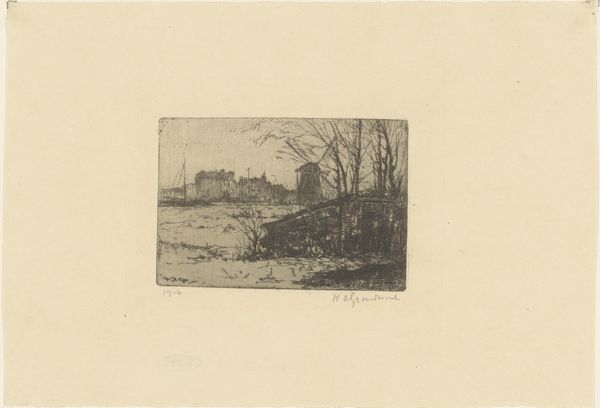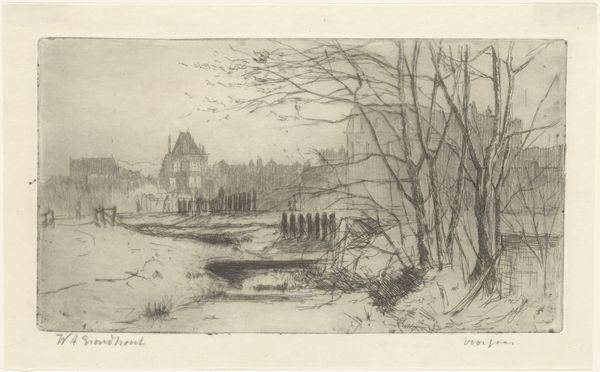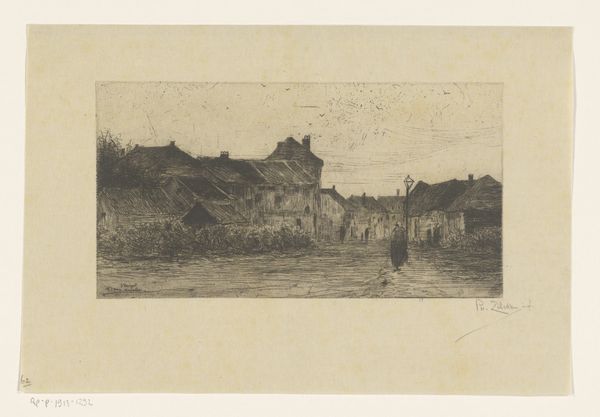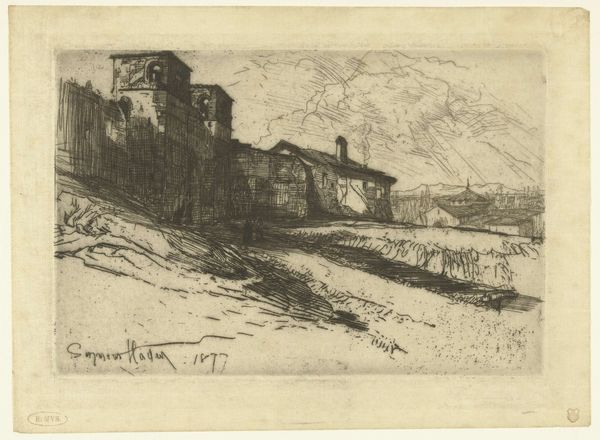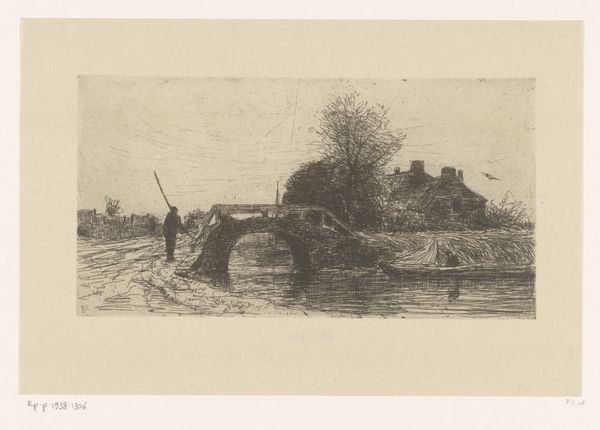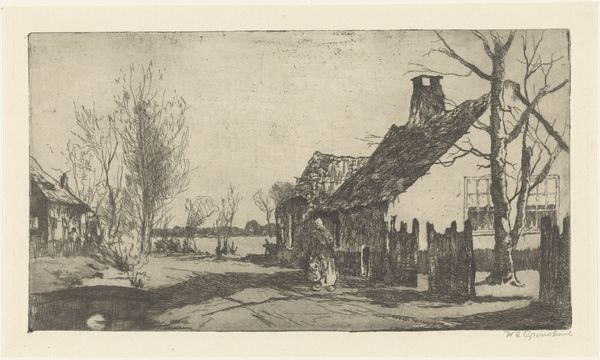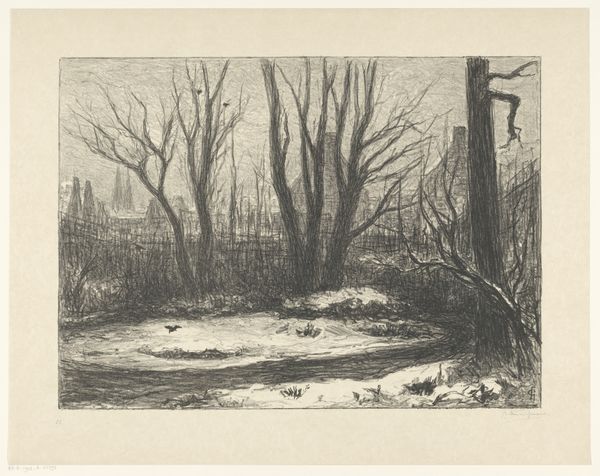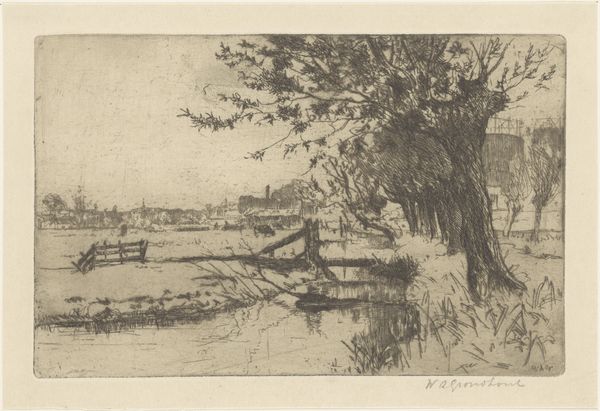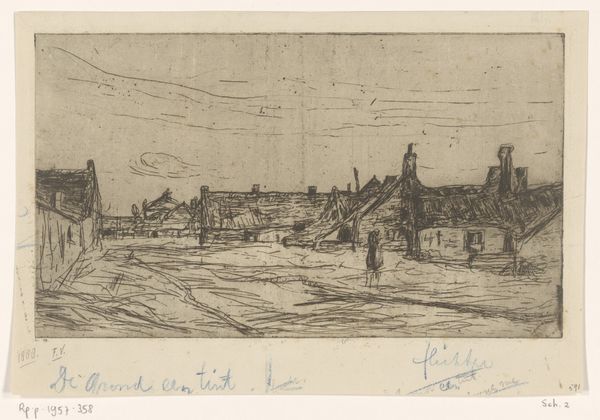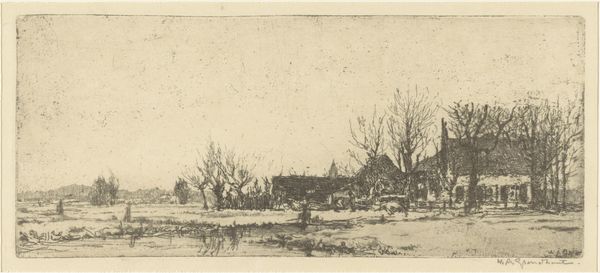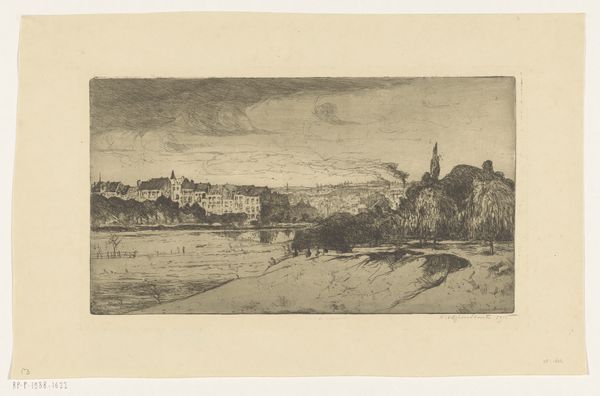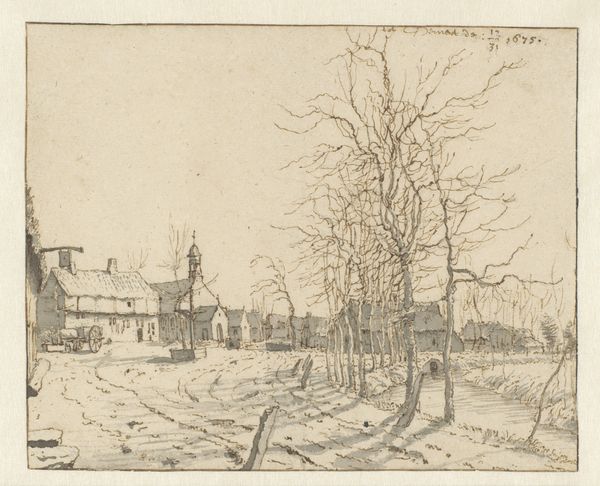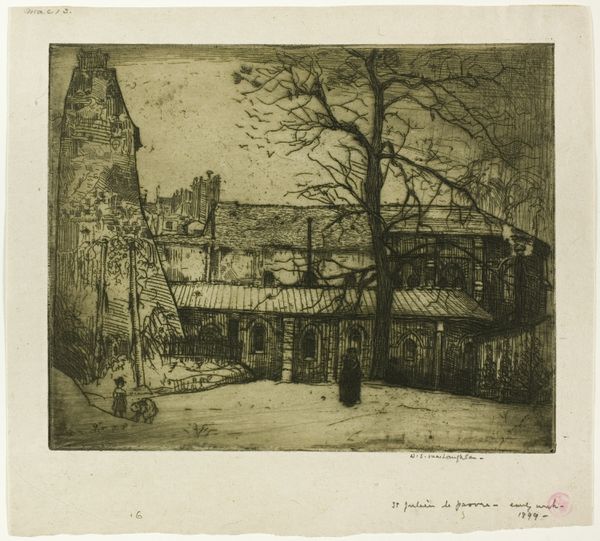
print, etching
# print
#
etching
#
landscape
#
realism
Dimensions: height 70 mm, width 100 mm
Copyright: Rijks Museum: Open Domain
Curator: Looking at Willem Adrianus Grondhout’s “Landschap met molen in de Binckhorst in Den Haag,” created in 1916 using etching, I'm struck by the way the artist chose this particular printmaking process. Editor: Yes, the landscape comes across beautifully, with this delicate rendering of a windmill in its setting. What's your reading of the materiality here? Curator: Well, consider etching's reliance on acid and metal. It's a process born from industrial practices. By choosing this medium to depict a landscape with a windmill, traditionally a symbol of pre-industrial labor, Grondhout creates a fascinating dialogue. He uses a technique rooted in mass production to capture a scene that’s rapidly disappearing because of it. What do you make of that tension? Editor: That’s very insightful. I hadn’t thought of the industrial process behind the etching itself. So you are suggesting that the material connects to the means of production of the time, a commentary about landscape change? Curator: Precisely. And the fact that it's a print, designed for multiple impressions, speaks to consumption and distribution – turning a unique view into something reproducible and accessible. Look closely at the layering of lines, the labor evident in the creation of the plate... all of this brings materiality into focus. Editor: It's fascinating to consider how the choice of etching underscores these broader societal shifts through its own process and possibilities. It really highlights the means of production, as you put it, not just the pastoral subject. Thanks for pointing that out! Curator: Absolutely. Thinking about art through the lens of material and production opens up so many avenues for interpretation. It's not just about what's depicted, but how it was made, by whom, and for what purpose.
Comments
No comments
Be the first to comment and join the conversation on the ultimate creative platform.
